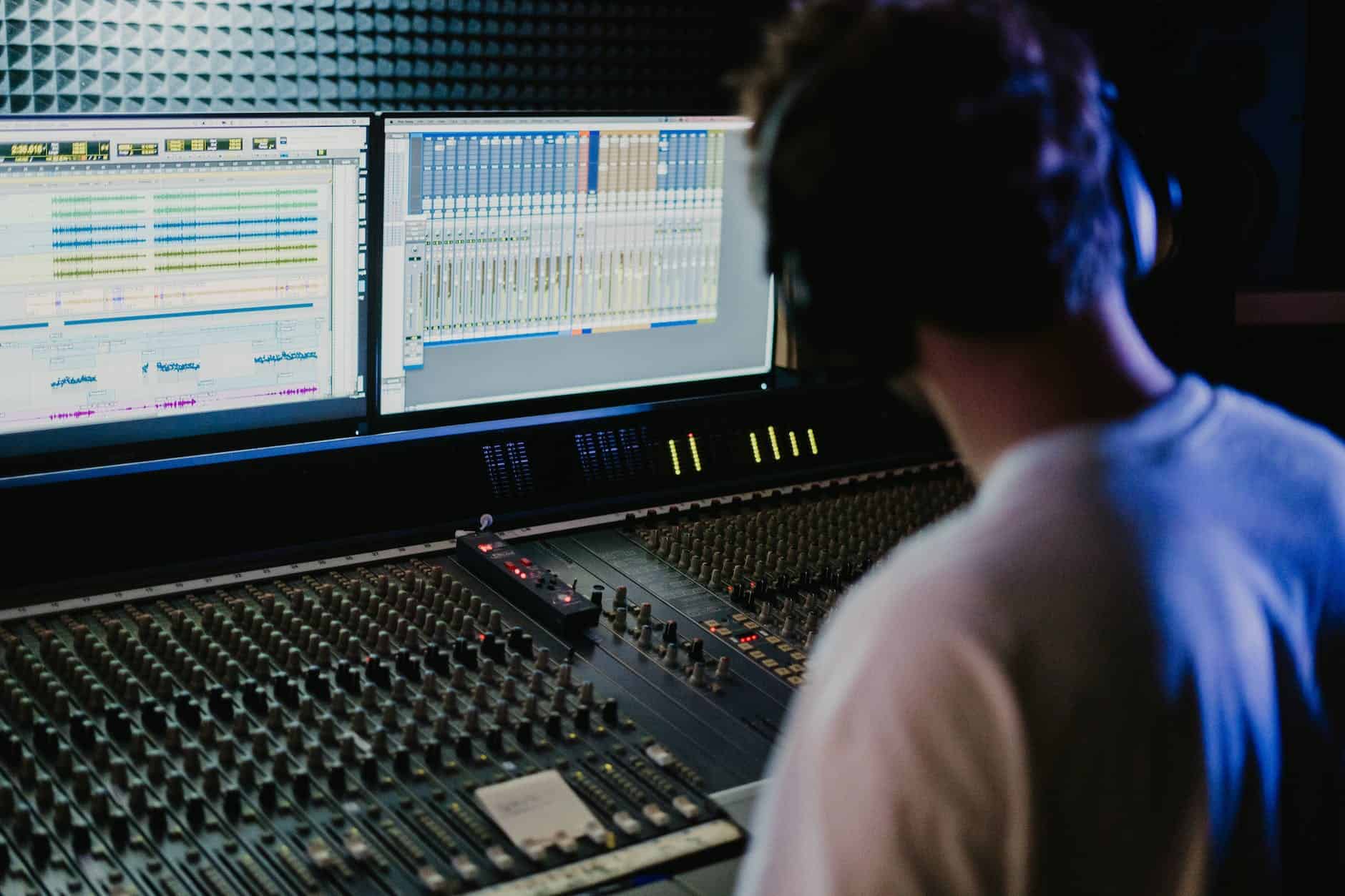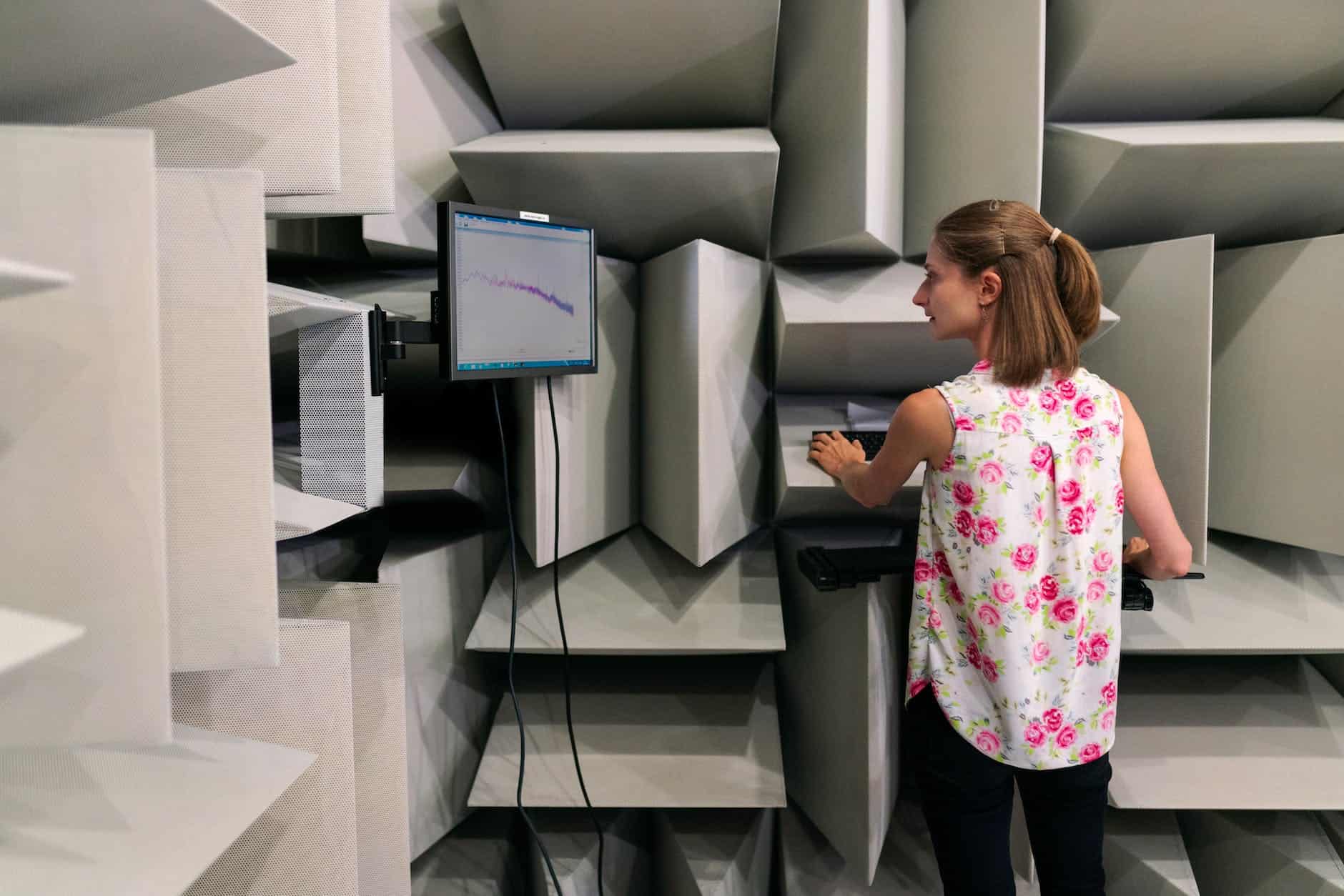Expert Guides
AC Coupling: Enhance Your Solar Power System

Welcome to our guide on AC coupling, a technique that can enhance the efficiency and reliability of your solar power system. Whether you have a grid-tied or off-grid system, AC coupling offers a range of benefits that can optimize the performance of your solar setup. In this article, we will explore the ins and outs of AC coupling, its advantages and disadvantages, and help you make an informed decision for your solar power needs.
If you’re looking to maximize the functionality of your solar power system and add battery backup capabilities, AC coupling is a technique you need to know about. By incorporating a hybrid inverter into your solar system, AC coupling allows for the seamless integration of battery storage, opening up a world of possibilities for energy management.
Key Takeaways:
- AC coupling is a technique that enhances the efficiency and reliability of solar power systems.
- It involves the addition of a hybrid inverter to integrate battery backup capabilities.
- AC coupling is commonly used in both grid-tied and off-grid solar systems.
- It offers advantages such as simplified wiring and compatibility with microinverters and optimizers.
- However, AC coupling has slightly lower battery charging efficiency compared to DC coupling.
Understanding AC Coupling in Solar Grid-Tie Systems
In a grid-tie solar power system with battery backup, AC coupling plays a crucial role in optimizing energy efficiency and reliability. By incorporating a hybrid inverter, we can seamlessly connect the solar system to the grid, enabling the charging of batteries using solar power, grid power, or even a generator. This combination of AC coupling and battery backup ensures that your home remains powered even during grid outages or when solar energy production is low.
AC coupling offers several advantages in a grid-tie solar system. Firstly, it eliminates the need for a separate charge controller, simplifying the installation process and reducing costs. Additionally, AC coupling allows for the utilization of existing DC wiring, further streamlining the setup.
When the grid goes down, the hybrid inverter automatically disconnects the system from the grid, ensuring the stored solar or battery power is used to supply critical loads in your home. This automatic switchover ensures continuous power supply, giving you peace of mind during unexpected power outages.
Although AC coupling offers significant benefits, it’s important to note that it comes with a slight trade-off in battery charging efficiency when compared to DC coupling. The multiple inversions involved in AC coupling can result in minimal energy losses during the charging process.
However, the lower charging efficiency can be mitigated with proper system sizing, ensuring that the hybrid inverter and battery bank are appropriately matched to meet your energy needs.
Now that we understand the basics of AC coupling in solar grid-tie systems, let’s explore the advantages and disadvantages of this approach in more detail. To provide a comprehensive overview, we’ve created a table that highlights the key factors to consider:
| Advantages of AC Coupling | Disadvantages of AC Coupling |
|---|---|
| Simplified installation | Slightly lower battery charging efficiency compared to DC coupling |
| Compatibility with microinverters and optimizers | Requires appropriate system sizing to optimize efficiency |
| Allows use of existing DC wiring |
While AC coupling offers simplified installation and compatibility with various system components, it’s essential to weigh these advantages against the lower battery charging efficiency. By carefully evaluating your specific needs and considering the pros and cons, you can determine whether AC coupling is the right choice for your grid-tie solar power system with battery backup.
Advantages of AC Coupling for Battery Backup Systems
When it comes to battery backup systems for solar power, AC coupling offers several advantages. Let’s explore the key benefits:
- No Need for a Separate Charge Controller: AC coupling eliminates the need for a separate charge controller, simplifying the system and reducing costs.
- Utilize Existing DC Wiring: AC coupling allows for the use of existing DC wiring, which reduces installation time and expenses.
- Built-In Flexibility: AC coupling offers compatibility with a wide range of solar panels, inverters, and battery technologies, providing flexibility in system design and expansion.
However, it’s important to note that AC coupling has slightly lower battery charging efficiency compared to DC coupling. This means that the hybrid inverter and battery bank may need to be oversized to compensate for the lower efficiency.
“AC coupling simplifies the system and reduces costs by eliminating the need for a separate charge controller.”
Ensuring optimal battery charging efficiency is crucial for maximizing the performance of a battery backup system. While AC coupling offers certain advantages, the slightly lower efficiency compared to DC coupling should be considered in system design and sizing.
Efficiency Comparison: AC Coupling vs. DC Coupling
| AC Coupling | DC Coupling | |
|---|---|---|
| Battery Charging Efficiency | Slightly lower | Higher |
| Charge Controller Required | No | Yes |
| DC Wiring | Utilizes existing wiring | May require additional wiring |
The efficiency comparison between AC coupling and DC coupling clearly shows that DC coupling offers higher battery charging efficiency. However, the decision between the two depends on factors such as budget, system requirements, and existing infrastructure.
Disadvantages of AC Coupling for Battery Backup Systems
While AC coupling offers several advantages for battery backup systems, it also has a few disadvantages. The primary disadvantage is lower battery charging efficiency compared to DC coupling. In AC-coupled systems, the stored solar electricity needs to be inverted three times before it can be used by home appliances, which results in efficiency losses. This means that the hybrid inverter and battery bank may need to be oversized to compensate for the lower efficiency.
“AC coupling, although advantageous in various aspects, does come with a trade-off in terms of battery charging efficiency,” says John Williams, a solar energy expert from SolarTech Solutions. “The multiple inversions from DC to AC and back to DC can introduce losses, affecting the overall performance of the system. To counteract this, it’s important to carefully size the hybrid inverter and battery bank to ensure adequate charging and storage capacity.”
While AC coupling remains a popular choice for battery backup systems due to its simplicity and compatibility with existing DC wiring, potential buyers should consider the trade-offs involved. The lower battery charging efficiency may require additional upfront investment in larger inverters and battery banks. However, for homeowners looking to retrofit storage to an existing solar system, the advantages of AC coupling often outweigh the disadvantages, making it a viable option to enhance their energy resilience.
AC-Coupled vs. DC-Coupled Solar + Storage Systems
When it comes to configuring solar panels, batteries, and inverters in a solar + storage system, you have two main options: AC coupling and DC coupling. Let’s explore the differences and advantages of each.
AC Coupling
AC coupling involves converting the DC power generated by solar panels into AC power before storing it in the battery. This is achieved through a hybrid inverter that connects the solar system to the grid. AC coupling has been widely used, especially for retrofitting battery backup to existing solar systems. It offers the advantage of compatibility with microinverters and optimizers, making it a flexible option for various setups.
DC Coupling
In contrast, DC coupling allows for a direct connection between the solar panels and the battery. This means the power generated by the panels is stored in the battery without the need for an additional conversion step. DC coupling offers higher overall efficiency compared to AC coupling, as there is no energy loss during the inversion process. However, it is more complex to install and requires careful integration to ensure proper functioning of the system.
To help you better understand the differences between AC coupling and DC coupling, let’s summarize their key attributes in a table:
| AC Coupling | DC Coupling |
|---|---|
| DC power from solar panels converted to AC | Direct connection of solar panels to battery |
| Compatible with microinverters and optimizers | Higher overall efficiency |
| Commonly used for retrofitting battery backup | More complex installation |
As you can see, both AC coupling and DC coupling have their own advantages and considerations. The choice between the two depends on your specific needs and priorities. If you already have a solar system and want to add energy storage, AC coupling may be the most straightforward option. However, if you’re installing a new system with both solar panels and a battery, DC coupling can offer higher overall efficiency.
Efficiency of AC-Coupled vs. DC-Coupled Solar Batteries
The efficiency of solar batteries is an important consideration when choosing between AC coupling and DC coupling. AC-coupled systems require the conversion of electricity from DC to AC and then back to DC before it can be used, which leads to some efficiency losses. In contrast, DC-coupled systems only require a single inversion, resulting in higher overall efficiency.
DC-coupled systems are more efficient in converting incoming electricity into stored electricity and back to usable electricity. This means that more of the energy produced by the solar panels is effectively stored and utilized. The roundtrip efficiency, which measures how much electricity is lost during charging and discharging, is a key factor to consider when comparing AC and DC coupling.
“DC-coupled systems have higher overall efficiency compared to AC-coupled systems. This is due to the reduced number of inversions required, resulting in less energy loss during the conversion process.”
To better illustrate the efficiency difference between AC-coupled and DC-coupled systems, let’s take a look at the following table:
| System Type | Roundtrip Efficiency |
|---|---|
| AC-Coupled | 80% |
| DC-Coupled | 90% |
As shown in the table, DC-coupled systems typically have a higher roundtrip efficiency compared to AC-coupled systems. This means that more energy is effectively stored and available for use in a DC-coupled system. However, it’s important to consider other factors such as system design, installation requirements, and cost when making a decision between AC and DC coupling.
Installation Considerations for AC-Coupled Solar Batteries
When it comes to retrofitting storage to an existing solar system, AC coupling offers significant installation advantages. One of the key benefits is the ability to utilize the existing solar inverter system, eliminating the need for extensive rewiring and reducing upfront installation costs. This makes AC coupling an attractive option for homeowners who already have a solar array installed and are looking to add energy storage.
By leveraging the existing solar inverter system in an AC-coupled configuration, homeowners can seamlessly integrate battery storage without the need for additional equipment. This not only simplifies the installation process but also minimizes the upfront investment required. With AC coupling, you can tap into the power of energy storage to enhance the performance and reliability of your solar power system without breaking the bank.
However, it’s important to consider that AC coupling may not offer the same level of overall efficiency as a DC-coupled system. If you are installing new solar panels alongside a battery storage system, a DC-coupled solution may provide higher efficiency. However, it’s worth noting that opting for a DC-coupled system can result in increased upfront installation costs and complexity.
When deciding between AC and DC coupling, it’s crucial to evaluate your specific needs and the characteristics of your solar + storage installation. Consider factors such as existing infrastructure, potential energy savings, and your budget. Consulting with a solar energy professional can provide valuable insights and help you make an informed decision that aligns with your goals.

Key Installation Considerations for AC-Coupled Solar Batteries:
- Utilize existing solar inverter system
- Minimize the need for rewiring
- Reduce upfront installation costs
- Evaluate overall system efficiency
- Consider the complexity of installation
- Consult with a solar energy professional
Considerations for Choosing AC- or DC-Coupled Systems
When deciding between AC and DC coupling for your solar panels and battery storage system, there are several factors to consider. If you already have a home solar array installed and wish to add energy storage as a retrofit, AC coupling is likely the best choice. It allows you to utilize the existing solar inverter system, reducing installation complexity and costs. However, if you are installing solar panels and a battery storage system together, a DC-coupled system may offer better overall performance.
A DC-coupled system provides higher efficiency as it allows for a direct connection between the solar panels and the battery, minimizing energy losses during conversion. This can result in better energy utilization and increased savings over time. However, it is essential to consider that DC-coupled systems often have higher upfront installation costs compared to AC-coupled systems.
Here’s a summary of the key considerations:
- If you are retrofitting energy storage to an existing solar system, AC coupling is recommended to leverage your current solar inverter system.
- If you are installing solar panels and a battery storage system simultaneously, a DC-coupled system may offer higher overall performance and efficiency.
- However, keep in mind that DC-coupled systems typically come with higher upfront installation costs.
| Considerations | AC Coupling | DC Coupling |
|---|---|---|
| Installation | Simple retrofit if you already have a solar array installed | More complex, especially when installing new solar panels |
| Performance | Slightly lower efficiency | Higher efficiency |
| Upfront Costs | Lower installation costs | Higher installation costs |
Ultimately, the choice between AC and DC coupling depends on your specific circumstances and priorities. If you need assistance in selecting the most suitable option for your solar + storage installation, consult with a solar energy professional who can provide expert guidance tailored to your needs and goals.
Shopping for a Solar Battery: AC Coupled vs. DC Coupled
When shopping for a solar battery, it’s important to consider whether it requires a separate inverter or comes with a built-in inverter. AC-coupled batteries typically require a separate inverter, while some DC-coupled batteries have built-in inverters. The presence of a built-in inverter affects the efficiency rating of the battery. It’s important to compare efficiencies at every step, from the electricity produced by the solar panels to the AC electricity pulled from the battery for use. This will provide a more accurate comparison between AC- and DC-coupled systems.

When comparing AC and DC coupling for solar batteries, several factors should be considered:
- Efficiency Rating: AC-coupled batteries may have lower efficiency ratings compared to DC-coupled batteries due to the extra conversion steps involved. This can impact the overall performance of the system.
- Inverter Compatibility: AC-coupled batteries require a separate inverter, which adds complexity to the system and may require additional installation costs. DC-coupled batteries with built-in inverters eliminate the need for a separate inverter, simplifying the installation process.
- Cost: The presence of a built-in inverter in DC-coupled batteries can affect the cost. While AC-coupled batteries may have a lower upfront cost, the additional expenses for a separate inverter should be taken into account.
By carefully considering these factors, you can make an informed decision when choosing between AC and DC coupling for your solar battery. It’s essential to prioritize the aspects that are most important to you, whether it’s maximizing efficiency, simplifying installation, or minimizing costs.
Conclusion
In conclusion, AC coupling offers several advantages for enhancing your solar power system. One of its key benefits is simplified installation, making it a popular choice for retrofitting battery backup to existing solar systems. AC coupling is also compatible with microinverters and optimizers, allowing for optimized energy production and greater flexibility with system design. Additionally, AC coupling enables you to rely on the grid for additional charging, providing a reliable backup power source.
However, it’s important to note that AC coupling has a slight drawback of lower battery charging efficiency compared to DC coupling. This is due to the additional conversions required from DC to AC and back to DC. On the other hand, DC coupling offers higher overall efficiency by directly connecting the solar panels to the battery, minimizing energy losses.
When choosing between AC- and DC-coupled systems, it’s crucial to consider your specific needs and the specifics of your solar + storage installation. If you already have a solar array installed and want to add energy storage, AC coupling may be the best option due to its simplified installation process and compatibility with existing equipment. However, if you are installing a new solar system and battery storage simultaneously, DC coupling may provide higher overall efficiency, although it may come with increased upfront costs.
To make an informed decision and choose the most suitable option for your solar + storage system, we highly recommend consulting with a solar energy professional. They can assess your specific requirements, evaluate the technical aspects, and provide expert guidance to help you optimize your solar power system for maximum efficiency, reliability, and cost-effectiveness.
AC coupling is a technique used to enhance the efficiency and reliability of a solar power system. It involves adding a hybrid inverter that serves as the interface between the solar system and the grid. AC coupling in a grid-tie solar system with battery backup involves the addition of a hybrid inverter that connects the solar system to the grid. This allows for the charging of batteries using either solar power, grid power, or even a generator. In the event of a grid outage, the hybrid inverter automatically disconnects the system from the grid and uses the solar or battery power to supply critical loads.
One of the primary advantages of AC coupling is that it eliminates the need for a separate charge controller, simplifying the system and reducing costs. AC coupling also allows for the use of existing DC wiring, further reducing installation time and expenses.
The main disadvantage of AC coupling is lower battery charging efficiency compared to DC coupling. Since the stored solar electricity needs to be inverted three times before it can be used by home appliances, there are efficiency losses. This means that the hybrid inverter and battery bank may need to be oversized to compensate for the lower efficiency.
AC coupling involves inverting the DC power from solar panels into AC power before storing it in the battery, while DC coupling allows for direct connection of the solar panels to the battery. AC coupling is commonly used for retrofitting battery backup to existing solar systems, while DC coupling offers higher efficiency but is more complex to install.
DC-coupled systems are generally more efficient than AC-coupled systems because they require fewer inversions of electricity. AC-coupled systems invert the electricity from DC to AC and back to DC before it can be used, resulting in efficiency losses. AC coupling is often the better option for retrofitting storage to an existing solar system because it allows for the use of the existing solar inverter system, reducing the need for rewiring and lowering upfront installation costs.
When choosing between AC- and DC-coupled systems, factors to consider include whether you already have a solar array installed (AC coupling may be better for retrofitting), whether you are installing solar panels and a battery storage system simultaneously (DC coupling may offer higher efficiency), and the associated upfront installation costs.
When shopping for a solar battery, it’s important to consider whether it requires a separate inverter or comes with a built-in inverter. AC-coupled batteries typically require a separate inverter, while some DC-coupled batteries have built-in inverters. The presence of a built-in inverter affects the efficiency rating of the battery.
FAQ
What is AC coupling?
How does AC coupling work in a grid-tie solar system with battery backup?
What are the advantages of AC coupling for battery backup systems?
What are the disadvantages of AC coupling for battery backup systems?
What is the difference between AC-coupled and DC-coupled solar + storage systems?
Which is more efficient, AC-coupled or DC-coupled solar batteries?
Is AC coupling or DC coupling better for retrofitting storage to an existing solar system?
What factors should be considered when choosing between AC- and DC-coupled systems?
What should I consider when shopping for a solar battery?
AI Generator
Ownership Battle in the Age of AI-Generated Music

The emergence of artificial intelligence in music production has ushered in a new era of innovation. However, it has also sparked debates over ownership rights. As AI-generated music becomes more common, concerns about who owns these creations are brought to light.
This article delves into the legal battles and ethical debates surrounding AI-generated music ownership.
Defining Ownership in AI-Generated Music
In a traditional sense, determining the owner of the copyrighted material is straightforward. However, with AI-generated content, the situation becomes more complex.

Is the creator of the algorithm that generated the music the owner? Is it the person who trained the algorithm? Is it possible to claim ownership over something not directly created by human hands?
Grimes’s Controversial Tweet: A Case Study
Grimes’s tweet about allowing her voice to be used in AI-generated music exemplifies this issue. She said she would sell her digital soul for $10 million, granting an AI company permission to use her voice as they wished. The tweet sparked controversy, with some seeing it as selling out and others viewing it as a clever move.
Legal Battles and Intellectual Property
Ownership rights of AI-generated music are just starting to be tested in courts. In 2018, Sony won a landmark case against musician Kevin Parks Jr., who claimed he had created songs using Sony’s software without permission or compensation. The court ruled in favor of Sony since their software was used in creating Parks’ songs.
This ruling raises questions about whether algorithms can be considered intellectual property or merely tools used by creators. If algorithms are deemed intellectual property, there may be issues surrounding their licensing for commercial use.
Record Labels and the Changing Dynamics
As record labels adapt to the rise of AI-generated content, they, too, must confront ownership rights issues. Record labels have historically owned much of the copyright associated with artists’ work; however, this dynamic may change as more artists turn to AI-generated music.
If an artist uses an AI program to create a piece of music, who owns the rights to that work? Is it the artist or the creator of the algorithm that generated it?
Implications for Streaming Platforms
The rise of AI-generated music also impacts streaming platforms like Spotify and Apple Music. These platforms have already faced criticism for their low royalty payouts to artists, and if AI-generated content becomes more prevalent, this issue may only worsen.
Additionally, as record labels lose some control over ownership rights, they may push for higher payouts from these streaming services.
Public Domain and AI-Generated Music
The implications of AI-generated music on the public domain are worth considering. AI algorithms often use existing music data to create new compositions, raising questions about whether AI-generated music should be considered part of the public domain or if new legal frameworks are needed to protect both original creators and AI developers.
When an AI algorithm generates music based on existing works, it can be difficult to determine if the resulting composition is a derivative work or an entirely new creation. If AI-generated music is considered part of the public domain, it may limit the rights of original creators whose work was used as input. On the other hand, if AI-generated music is granted copyright protection, it could potentially stifle creativity and limit access to cultural works.
Moral Rights and AI-Generated Music
The concept of moral rights is particularly relevant in the context of AI-generated music. Moral rights protect an artist’s right to be recognized as the creator of their work and to preserve the integrity of their creations. It is important to discuss how moral rights might apply to AI-generated music and the potential challenges that may arise.
In the case of AI-generated music, it can be difficult to determine who should be recognized as the creator: the original artist whose work was used as input, the developer of the AI algorithm, or both. Additionally, AI-generated music may inadvertently modify or distort the original work, potentially violating the moral rights of the original creator.
AI-Generated Music and Fair Use
The concept of fair use plays a significant role in the context of AI-generated music. Fair use is a legal doctrine that allows for the limited use of copyrighted material without requiring permission from the rights holder. It is important to discuss whether AI-generated music, which often relies on existing music data, can be considered fair use and the potential legal implications that may arise.
When AI algorithms use existing music as input, they may be seen as transformative, creating new works based on the original material. However, the extent to which AI-generated music can be considered fair use is not yet clearly defined in the law, and it may vary depending on the degree of transformation and the potential market impact on the original work.
In conclusion, addressing the additional topics of public domain, moral rights, and fair use in AI-generated music contributes to a more comprehensive understanding of the various legal and ethical issues surrounding this emerging technology. As AI-generated music becomes more prevalent, it is crucial for legal frameworks and industry practices to adapt in order to balance the rights of creators, AI developers, and the public interest.
The Future of Ownership Rights
In conclusion, ownership rights in the era of AI-generated music are uncertain at best. As more legal battles arise and ethical debates continue, it is clear that traditional copyright laws will need to adapt to keep up with technological advancements.
The struggle for ownership is just beginning, but it will undoubtedly shape the future of the music industry for years to come.
AI Generator
The Influence of Artificial Intelligence on The Creation of Music

A New Era of Creativity and Expression
Music has always been a strong reflection of human innovation and emotions. Throughout history, our voices and musical instruments have played a crucial role in expressing our feelings, telling stories, and building relationships with others. As technology has advanced, our ways of creating music have also progressed.
Modern musicians now have access to various tools, enabling them to manipulate sound in unimaginable ways. Synthesizers can emulate virtually any sound, while digital audio workstations facilitate precise editing and manipulation of recorded tracks. And now, the rise of artificial intelligence (AI) offers musicians even more possibilities for music creation.
AI Applications in the Music Industry
AI is being utilized in multiple ways within the music industry. One popular application is generating original compositions based on existing musical data sets. By analyzing millions of songs across genres and periods, AI algorithms can identify patterns and generate new melodies or chord progressions that fit within those patterns.

Another application involves using AI to enhance existing performances or recordings. For instance, software like iZotope’s RX can isolate individual instrumental tracks from a mix and remove unwanted noise or artifacts without impacting the rest of the recording.
Unintended Consequences and Concerns
However, as with any emerging technology, unintended consequences arise from using AI in music creation. One worry is that AI-generated music might lack the emotional depth and nuance that human performance offers. While an algorithm can create technically proficient melodies or chord progressions, it may not capture the same sense of emotion or passion found in a live performance.
Another concern revolves around ownership rights of AI-generated music. If an algorithm generates an original composition based on data sets owned by multiple parties (such as record labels or streaming platforms), who has the rights to that composition? This question has already sparked legal battles between artists collaborating with AI algorithms and those claiming ownership over their contributions.
Harnessing AI for Collaboration and Growth
Many musicians and industry professionals see AI as an opportunity for collaboration and growth. AI can be a creative assistant, inspiring artists, helping them overcome writer’s block, or even offering suggestions to improve their compositions. As AI technology continues to evolve, its ability to learn from and adapt to a musician’s style will improve, further enhancing the creative process.
AI in Music Education and Talent Discovery
AI also has the potential to revolutionize music education and talent discovery. With AI-powered music learning apps and platforms, students can receive personalized instruction based on their skill level and learning style. Furthermore, AI can analyze and identify undiscovered talent by evaluating their performances and predicting their potential for success.

Addressing Ethical Considerations and Regulations
To ensure the responsible integration of AI into the music industry, it is essential to address ethical considerations and establish regulations. For instance, guidelines should be set to ensure that AI-generated compositions do not infringe on existing copyrights or that AI technology is not used maliciously to plagiarize or manipulate the work of others.
Additionally, as AI-generated music becomes more prevalent, it is crucial to develop clear standards for crediting the contributions of both human artists and AI algorithms to a given work. This will help to prevent legal disputes and foster a fair and transparent environment for all parties involved.
Ethical Considerations in AI-Generated Music
As AI-generated music becomes increasingly widespread, various ethical concerns emerge. Some of these concerns include the potential for AI-generated music to contribute to cultural appropriation, the dilution of traditional music styles, or the homogenization of music in general.
Cultural Appropriation
Cultural appropriation occurs when elements of one culture are adopted or used by members of another culture, often in a way that is disrespectful or exploitative.

AI-generated music, which often relies on large datasets of existing music, might inadvertently incorporate elements of various cultures without giving proper credit or understanding the cultural context. This can result in the misrepresentation or trivialization of the original culture and may lead to further marginalization of underrepresented communities.
Dilution of Traditional Music Styles
AI-generated music algorithms are often designed to identify popular patterns and trends within the music they analyze.
As a result, the output may lean heavily toward mainstream or widely-accepted styles, which can dilute traditional or less-popular music styles. Over time, this may result in a decline in the diversity of music genres and a loss of unique cultural expressions and heritage.
Homogenization of Music
The widespread use of AI-generated music could also contribute to the homogenization of music, as algorithms tend to create compositions based on patterns and trends found in existing data. This may result in technically proficient music lacking the distinctiveness and creativity found in human-generated compositions.
As AI-generated music becomes more prevalent, there is a risk that the rich tapestry of diverse musical styles and influences may be reduced to a more uniform, less imaginative landscape.
In conclusion, while AI-generated music offers exciting opportunities for innovation and new forms of creativity, addressing and considering the ethical implications of its widespread use is crucial. It is essential to develop ways to preserve cultural diversity and respect the heritage of various music styles while embracing the potential of AI in music creation.
Embracing the AI-Infused Future of Music
The increasing influence of AI in the music industry offers an exciting new frontier for creativity, collaboration, and innovation. By addressing the potential concerns and working together to create ethical guidelines and regulations, musicians, industry professionals, and AI developers can ensure that the integration of AI into the music landscape is both responsible and beneficial.
As we embrace this AI-infused future, we can look forward to new and innovative ways to create and enjoy music, while also remaining mindful of the potential pitfalls and challenges that come with any technological advancement. With the right approach, the future of music and AI has the potential to be a harmonious and groundbreaking partnership.
Despite these concerns, it’s undeniable that AI is revolutionizing the music industry in thrilling ways. It enables new forms of creativity and experimentation while also presenting unique challenges for artists and record labels alike. As we continue to navigate this new era of music creation, it will be fascinating to see how these unintended consequences evolve.
Podcast
Bridging the Gap: Harnessing the Power of Podcasts and Videos to Connect Communities with Vital Services

Podcasts and Videos in Community Services
Community support services are essential for helping those in need, but many individuals are unaware of the resources available to them. This is where podcasts and videos play a vital role as powerful tools for educating and engaging community members.
By creating audio and visual content that highlights the impact of community services, organizations can bridge the gap between service providers and the people they serve.
In this blog post, we will explore the various benefits of incorporating podcasts and videos into community services strategies and best practices for creating engaging content.
The Role of Podcasts and Videos in Strengthening Community Services
Podcasts and videos are a powerful way to communicate with community members and inform them of available services. Through audio and visual content, community service organizations can educate and engage their audience.
Podcasts and videos can help bridge the gap between community members and service providers, increasing accessibility and awareness of resources. Creating content that highlights the impact of community services can inspire others to get involved and support the cause.
Podcasts and videos can also provide a platform to share personal stories and experiences, helping to break down stigma and create a sense of community.
How Podcasts and Videos Can Help Improve Access to Community Resources
Podcasts and videos can provide a medium for sharing information about important community resources in an engaging and accessible way. This is particularly important for individuals who may not have access to traditional written materials or may have language barriers. Here are some ways in which podcasts and videos can improve the accessibility of community resources:
- Breaking down language barriers: Audio and visual content can help reach individuals who may speak a different language or have limited literacy skills. By providing information in a format that doesn’t rely on reading, podcasts and videos can help ensure that more members of the community are able to access important resources.
- Providing updates: Podcasts and videos can be used to provide updates on changes to community resources such as hours of operation, new programs, or changes to eligibility criteria.
- Encouraging action: Creating content that encourages community members to take action, such as accessing resources or volunteering, can help improve utilization of services. By highlighting the benefits of certain resources, podcasts and videos can help inspire individuals to take advantage of them.
- Showcasing impact: Podcasts and videos can showcase the impact of community resources through personal stories and testimonials, further highlighting their value. By sharing stories of those who have benefited from the resources, community service organizations can emphasize the importance of accessibility to community resources.
In short, podcasts and videos can play a crucial role in improving access to community resources by breaking down language barriers, providing updates, encouraging action, and showcasing impact.

Community service organizations should consider incorporating these mediums into their outreach efforts to help ensure that important resources are accessible to all members of the community.
The Benefits of Using Audio and Video Content in Community Outreach Programs
Using audio and visual content can have many benefits for community service organizations looking to reach a wider audience and strengthen their outreach efforts. Here are some of the key advantages:
- Engaging format: Audio and video content can be more engaging and memorable than written materials, helping to capture the attention of community members and inspire them to take action.
- Accessibility: Audio and visual content can help organizations reach individuals who may not have access to traditional written materials or who speak a different language.
- Personal connection: Incorporating personal stories and testimonials can help community members feel more connected to the cause and motivated to get involved.
- Establishing expertise: Creating regular content, such as a podcast or video series, can help organizations establish themselves as thought leaders in their field and build a following.
- Collaboration: Podcasts and videos can provide a platform for collaboration and partnerships with other organizations, further strengthening the impact of community outreach programs.
Overall, incorporating audio and video content into community outreach programs can help organizations better connect with their audience, improve access to important resources, and build a stronger, more engaged community.
Using Podcasts and Videos to Enhance Volunteer Recruitment in Community Services
Volunteers are a crucial part of any community service organization. However, finding and recruiting volunteers can be a challenge. Podcasts and videos can be an effective way to enhance volunteer recruitment efforts.
Creating Content that Highlights the Impact of Volunteer Work
One of the most powerful ways to inspire people to volunteer is by showcasing the impact that their work can have. Creating content that tells the stories of volunteers and the impact they’ve had can be a powerful recruitment tool.
Consider producing videos or podcasts that feature interviews with volunteers, sharing their experiences and the change they are making in their communities. Highlighting impactful volunteer projects that have made a difference in the community can also be a great way to draw attention to volunteer opportunities.
Providing Information on Volunteer Opportunities
Podcasts and videos can also be used to provide information about volunteer opportunities. Creating a series of short videos or podcast episodes that highlight different volunteer roles and the skills needed to excel in them can be a great way to engage potential volunteers.
It can also be helpful to include information on the benefits of volunteering, such as gaining new skills, meeting new people, and making a positive impact in the community. By sharing this information in an engaging and accessible format, community service organizations can attract more volunteers and build a strong team of supporters.
Using Storytelling to Encourage Volunteer Action
Storytelling can be a powerful tool for encouraging people to take action. By sharing stories of the impact that volunteers have had in the community, organizations can inspire others to get involved.
Consider using video or audio content to showcase the experiences of volunteers and highlight the difference they have made. Encouraging existing volunteers to share their stories and experiences can also be an effective way to generate interest in volunteering and attract new supporters.
By incorporating podcasts and videos into their outreach strategies, community service organizations can enhance volunteer recruitment efforts and attract more supporters. Whether through highlighting the impact of volunteer work, providing information on volunteer opportunities, or using storytelling to encourage volunteer action, audio and visual content can be a powerful way to engage and inspire others to get involved in their communities.
Creating Engaging Video and Audio Content for Community Service Organizations
When it comes to creating content for community service organizations, it’s important to consider the audience and their preferences for consuming information. Here are some tips for creating engaging video and audio content:
- Incorporate personal stories and testimonials: By sharing personal stories of how the organization has made a difference in people’s lives, you can make the content more relatable and engaging for viewers and listeners. Testimonials can also help build credibility for the organization.
- Use visual aids: Visual aids, such as infographics, images, or animations, can help simplify complex information and make it more accessible. Consider using visual aids to break up the content and emphasize important points.
- Create a consistent style and format: Creating a consistent style and format can help build a recognizable brand and increase engagement with regular viewers and listeners. Consider using the same intro and outro music, or using the same colors and fonts throughout your content.
- Experiment with different types of content: To keep your audience engaged, consider experimenting with different types of content, such as short videos, interviews, or animations. By mixing up the format, you can keep your content fresh and interesting.
By following these tips, you can create engaging video and audio content that will help your organization connect with your audience and increase awareness of your services.
Best Practices for Incorporating Podcasts and Videos into your Community Services Strategy
Identify clear goals and objectives
Before incorporating podcasts and videos into your community services strategy, it’s important to identify clear goals and objectives. Consider what you hope to achieve through this type of content and the audience you want to reach. This will help guide your content creation and ensure that your efforts are aligned with your overall strategy.
Invest in high quality equipment and editing software
Investing in high quality equipment and editing software is essential to ensure that your content is professional and engaging. This doesn’t mean that you have to break the bank, but it’s important to have equipment that can produce high quality audio and video content.
Designate a team or individual responsible for content creation
To ensure that your content is published on a consistent basis, designate a team or individual responsible for content creation. This person should have experience with audio and video production, as well as a strong understanding of your organization’s mission and goals.
Engage with the audience through social media and other channels
Engaging with your audience through social media and other channels is key to building a following and encouraging feedback and participation. Monitor comments and respond to questions or concerns promptly to create a sense of community and encourage ongoing engagement.
Measure impact through metrics
Finally, measure the impact of your podcasts and videos through metrics such as downloads, views, and engagement to continuously improve and refine your strategy. This will help you identify what’s working and what’s not, and make data-driven decisions on how to improve your content and reach your goals.
Note: Remember to always prioritize the needs and preferences of your audience when creating content for your community services strategy. By understanding what they want and need, you can create content that resonates with them and helps build a stronger connection between your organization and the community.
Conclusion
In conclusion, podcasts and videos can be powerful tools for community service organizations to communicate with their audience and share important information about available resources. By creating engaging and informative content, these organizations can reach a wider audience and inspire individuals to get involved and support their cause. Incorporating personal stories, testimonials, and visual aids can help create a sense of community and build brand recognition.
Best practices include identifying clear goals, investing in quality equipment and software, designating a team or individual for content creation, engaging with the audience, and measuring impact for continuous improvement.
Using podcasts and videos, community service organizations can strengthen their outreach efforts and make a meaningful impact on their community.
-

 Vetted2 months ago
Vetted2 months ago11 Best Gore Websites to Explore the Darker Side of the Internet
-

 Music Theory2 weeks ago
Music Theory2 weeks agoUnlocking Nature’s Harmony: The Power of 432 Hz Frequency in Sound & Music for Enhanced Living and Well-Being
-

 Vetted1 month ago
Vetted1 month ago15 Best Commercial Vacuum Cleaners for Heavy-Duty Cleaning Jobs
-

 Vetted2 months ago
Vetted2 months ago15 Best Essential Oils Brands to Elevate Your Aromatherapy Experience
-

 Sound Design2 weeks ago
Sound Design2 weeks agoWhat Is the Difference Between a Sound Engineer and A Sound Designer?
-

 Native Instruments Kontakt2 weeks ago
Native Instruments Kontakt2 weeks agoVOCAL AI – Animated Intelligence: The Ultimate Vocal Playground
-

 Sound Design2 weeks ago
Sound Design2 weeks agoWhy Sound Engineer
-

 Vetted2 months ago
Vetted2 months ago15 Best Concrete Sealers for Ultimate Protection and Longevity








